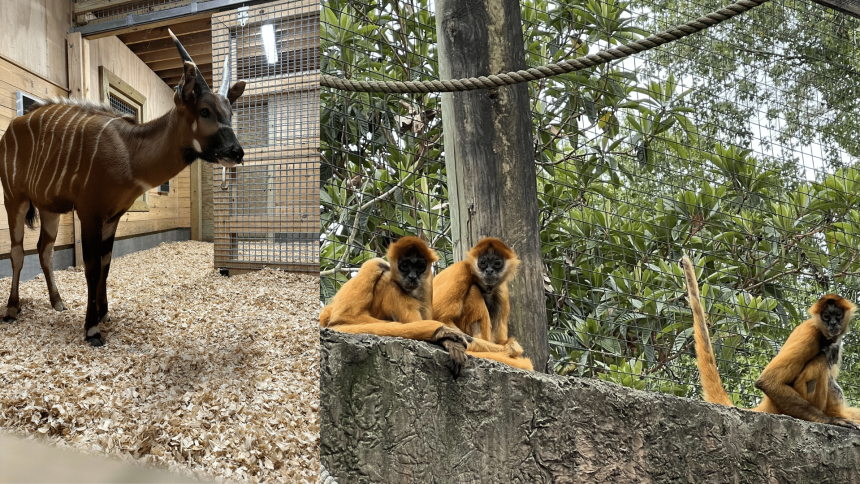Animal lovers in Mississippi now have the opportunity to see two new species that have been added to the Hattiesburg Zoo.
During an interview on Good Things with Rebecca Turner, Hattiesburg Zoo animal curator Kristen Moore announced the arrival of Klaus, the one-year-old bongo, as well as three spider monkeys.

“He is just a phenomenal animal. He is very, very sweet. He really likes people,” Moore said of Klaus. “He does like to hide a little bit during the day because bongos are a species that like to sort of be in the shade — like most of us do. So you might have to look a little harder to find him.”
Bongos are a large, mostly nocturnal, forest-dwelling antelope native to sub-Saharan Africa. They are characterized by a striking reddish-brown coat, black and white markings, white-yellow stripes, and long slightly spiraled horns.
It is the only species of bovine in which both sexes have horns. Bongos have a complex social interaction and are found in African dense forest mosaics. They are the third-largest antelope in the world. The species is considered to be near-threatened on the conservation status scale.
The three spider monkeys were previously housed at a zoo in Puerto Rico. The species is found in tropical forests of Central and South America, from southern Mexico to Brazil. The genus consists of seven species, all of which are considered under threat.
After the zoo in Puerto Rico had to close its doors due to suspected negligence, a lack of resources, and the deaths of animals, the primates were in need of a new home.
“They had to move all of those animals off of Puerto Rico very quickly. It was a whole process,” Moore recounted. “We got the first email in April. We received the primates in May. A keeper and myself drove to Dallas to pick them up from there and drove them all the way back to Hattiesburg.”
Spider monkeys have disproportionately long limbs and long prehensile tails, which make them one of the largest New World monkeys and give rise to their common name. Spider monkeys live in the upper layers of the rainforest, and forage in the high canopy.
They primarily eat fruits, but will also occasionally consume leaves, flowers, and insects. Recent meta-analyses on primate cognition studies indicated spider monkeys are the most intelligent New World monkeys.
Watch the full interview with Moore below.







